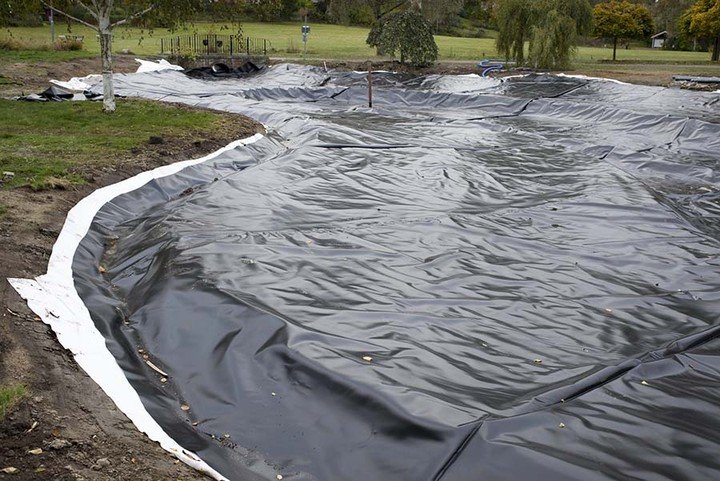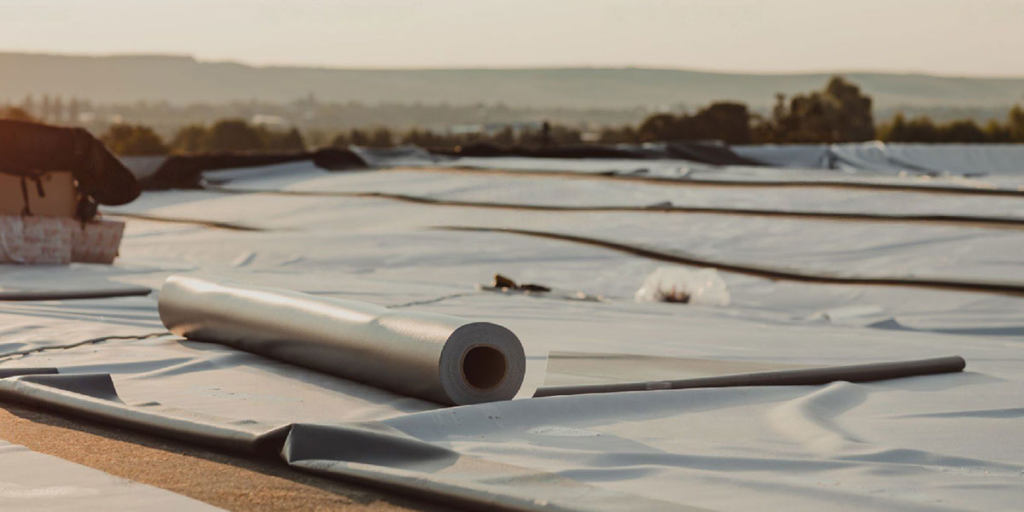Geomembranas have become a vital component in many construction and engineering projects due to their versatility, durability, and resistance to environmental elements. Whether for containment, erosion control, or waste management, their application is essential for project success. However, proper installation and maintenance are critical to ensuring their effectiveness. This blog will discuss the key construction details you need to consider when working with geomembranas, focusing on wholesale geomembrane solutions and the benefits of HDPE geomembrane liners.

I. Understand the Characteristics of Geomembrana
Before starting your construction project, it’s essential to understand the specific properties of the geomembrana you’re using. Geomembranas are synthetic liners designed to create a barrier against liquids, gases, or waste materials. They are often used in applications such as landfill capping, pond lining, and canal lining.
When sourcing materials, working with a wholesale geomembrane supplier is a cost-effective approach. Wholesale suppliers typically offer a wide variety of geomembranas, ensuring you find the material best suited to your project’s unique needs. Choosing the right HDPE geomembrane liner is critical, as HDPE (High-Density Polyethylene) is among the most commonly used materials due to its flexibility, chemical resistance, and durability.
Key Properties of Geomembrana
– Durability: Resistant to punctures and UV radiation.
– Flexibility: Adapts to different terrains and temperatures.
– Chemical Resistance: Ideal for containing hazardous substances.
– Longevity: Provides decades of reliable performance when installed correctly.
II. Ensure Proper Preparation of the Subgrade
The performance of any HDPE geomembrane liner depends on the condition of the surface it is laid on. The subgrade must be carefully prepared to avoid issues like punctures or uneven surfaces.
Steps to Prepare the Subgrade
1. Clear Debris: Remove sharp objects, roots, and rocks that could damage the geomembrana.
2. Level the Surface: Smooth and compact the soil to provide a stable foundation.
3. Install a Cushion Layer: If the surface has unavoidable sharp elements, a geotextile layer or sand layer should be installed to act as a protective cushion for the geomembrana.
III. Focus on Correct Installation Techniques
Installation is one of the most critical phases of working with geomembranas. Mistakes during this stage can compromise the liner’s effectiveness and lead to costly repairs. Follow these best practices to ensure success.
A. Handle Materials with Care
During transportation and handling, avoid dragging or dropping the geomembrana to prevent tears. Unroll the liner carefully, using proper equipment to minimize stress on the material.
B. Seam Welding is Crucial
Seam welding connects individual sheets of the HDPE geomembrane liner to form a continuous barrier. There are two main types of welding:
– Extrusion Welding: Best for repairing damaged areas or welding corners.
– Fusion Welding: Most effective for long, straight seams.
To ensure the integrity of the seams, conduct non-destructive testing such as air pressure or vacuum box testing.
C. Minimize Wrinkles
Wrinkles can compromise the liner’s performance and lifespan. To avoid them:
– Install the liner during cooler parts of the day.
– Use proper tensioning techniques while unrolling.
D. Overlap Edges Properly
Proper overlapping of the geomembrana sheets is essential for effective welding and containment. A general rule is to maintain an overlap of at least 4-6 inches, depending on the project requirements.
IV. Pay Attention to Anchoring
Anchoring the HDPE geomembrane liner securely is critical for preventing movement caused by wind, water pressure, or temperature fluctuations. Anchors can be trenches, sandbags, or other weighted materials.
Tips for Secure Anchoring
– Use trench anchors on slopes for better grip.
– Space anchors evenly to maintain tension.
– Check for loose areas after installation to prevent future adjustments.
V. Consider Environmental Factors
Environmental conditions, such as temperature and UV exposure, can affect the installation and performance of the geomembrana.
– Temperature: Avoid installing in extreme heat or cold, as it can lead to expansion or brittleness of the material.
– UV Exposure: If the liner will remain exposed, consider UV-resistant coatings or materials.
For long-term durability, HDPE geomembranas are a reliable choice, as they exhibit excellent UV resistance.
VI. Quality Testing and Maintenance
Once installed, quality testing ensures the geomembrana is performing as intended. Regular inspections and maintenance are also essential for long-term performance.
A. Conduct Post-Installation Testing
– Vacuum Box Testing: Checks for leaks in the seams.
– Air Channel Testing: Ensures proper seam fusion.
B. Regular Maintenance
– Inspect for visible damage, such as punctures or tears.
– Monitor performance in high-stress areas like slopes or corners.
– Perform periodic cleaning to remove debris and prevent chemical buildup.
VII. Conclusion
Proper installation and maintenance of geomembranas are crucial to ensuring their effectiveness in construction projects. By sourcing materials from reliable wholesale geomembrane suppliers, selecting high-quality HDPE geomembrane liners, and following best practices for preparation and installation, you can guarantee the success and longevity of your project.
Remember, the density of core keywords like geomembrana throughout your project planning and communication ensures clarity and consistency in achieving desired results. By focusing on the details outlined in this guide, your project will benefit from the full range of advantages that geomembranas offer.
